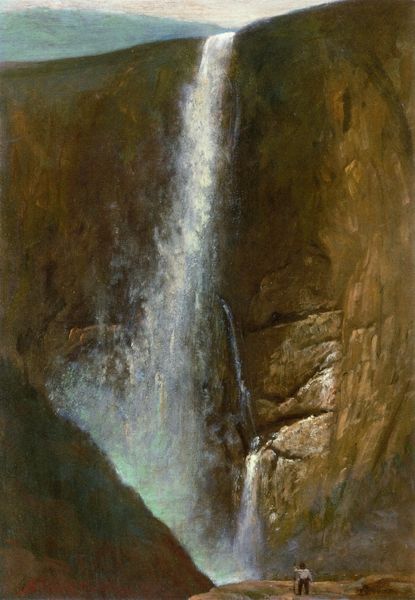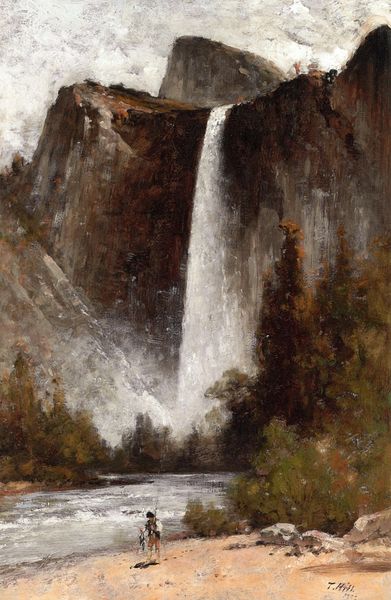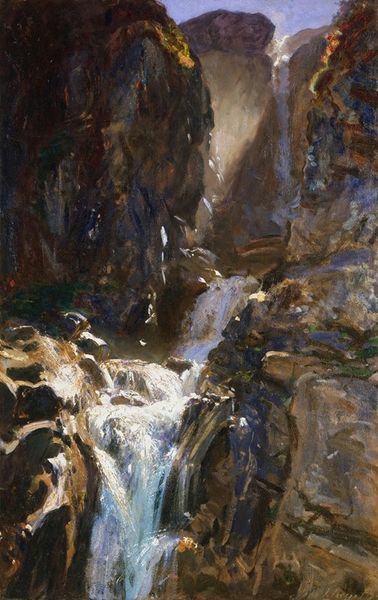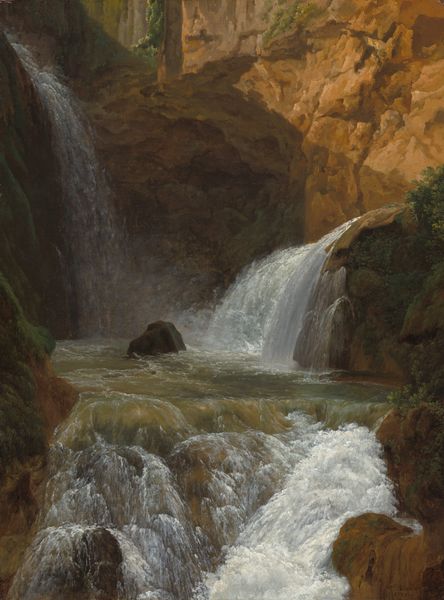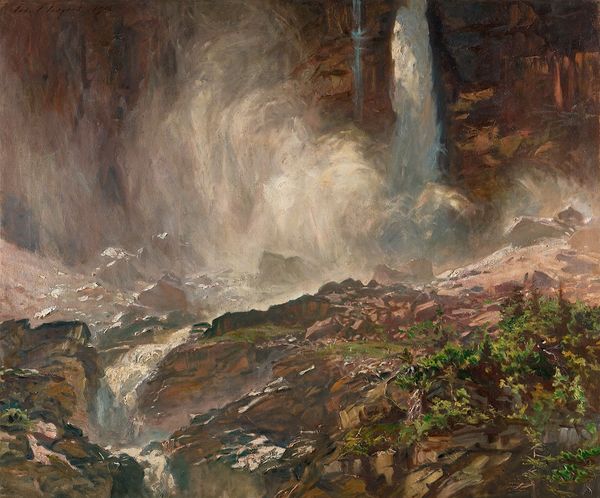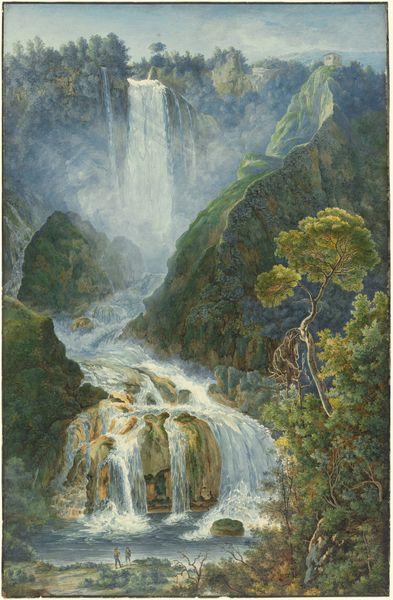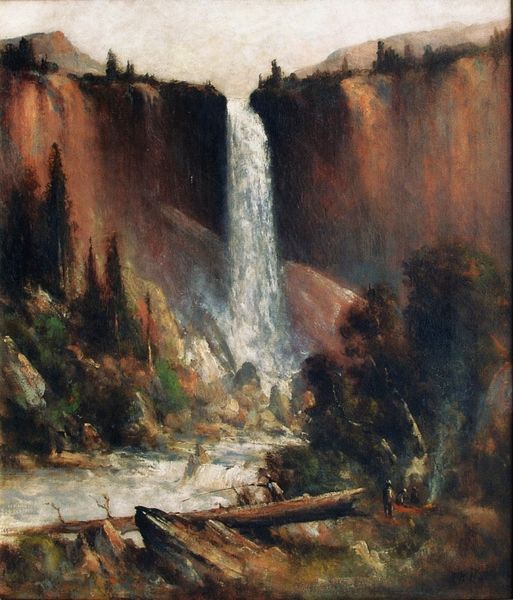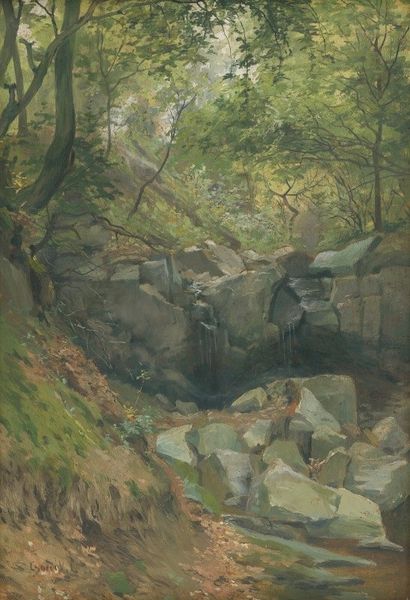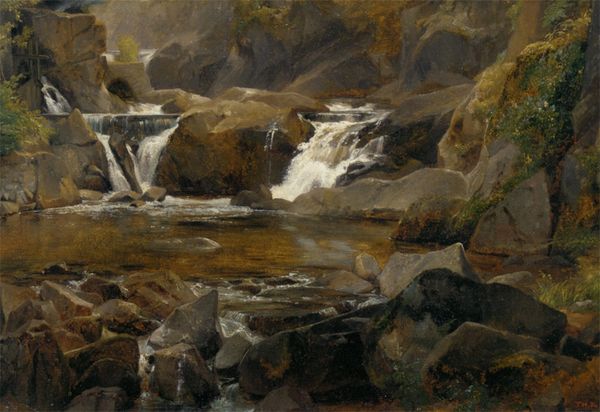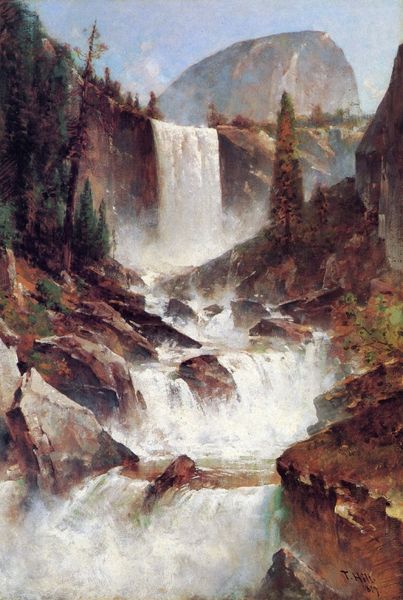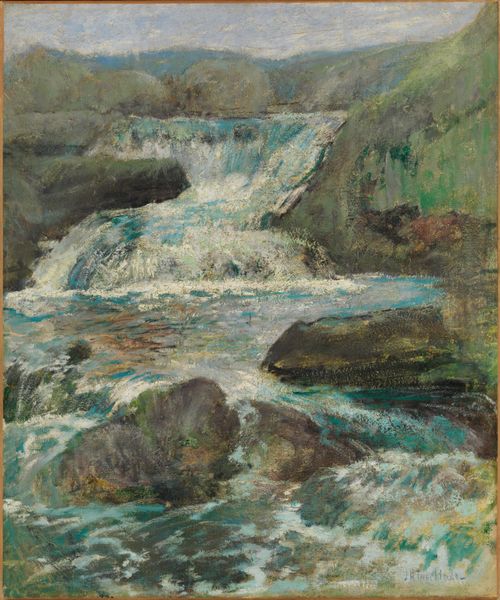
Copyright: Public Domain: Artvee
Editor: Here we have \u013dudov\u00edt \u010cord\u00e1k's "Waterfall," painted sometime between 1900 and 1905. It's an oil painting, and you can almost hear the water rushing; it feels so full of movement. How do you interpret this work, especially considering its place in art history? Curator: This painting encapsulates a specific moment in the development of landscape painting, reflecting both Impressionistic techniques and Romantic sensibilities. It comes at a time when "plein-air" painting was becoming increasingly popular, facilitated by new technologies like pre-mixed paints in tubes. Think about the socio-political context; as industrialization surged, images of untouched nature held an increasing cultural value, representing an escape from the urban environment. Do you see any evidence of this in the composition itself? Editor: Yes, I see it. There is nothing industrialized in the view shown in the artwork, only idealized nature, pure nature. So, its display in a museum might further reinforce a particular understanding and valuation of the "natural," setting it apart from contemporary realities. Is that fair to say? Curator: Precisely. The institutional setting plays a crucial role. Museums elevate such landscapes, transforming them into symbols of national identity or environmental preservation, which can have its own political implications depending on how land is used and by whom. Also, notice how the lack of people in the painting allows viewers to project themselves onto the scene, creating a sense of individual ownership and connection with nature. Editor: That's really interesting. I hadn’t considered how the absence of figures could be such a powerful statement. Curator: Art doesn't exist in a vacuum. Even seemingly straightforward landscapes are products of complex social and historical forces that shape their creation and reception. Editor: This makes me rethink how I approach landscape art from now on. I realize how important is to consider social contexts, particularly institutional display contexts.
Comments
No comments
Be the first to comment and join the conversation on the ultimate creative platform.
